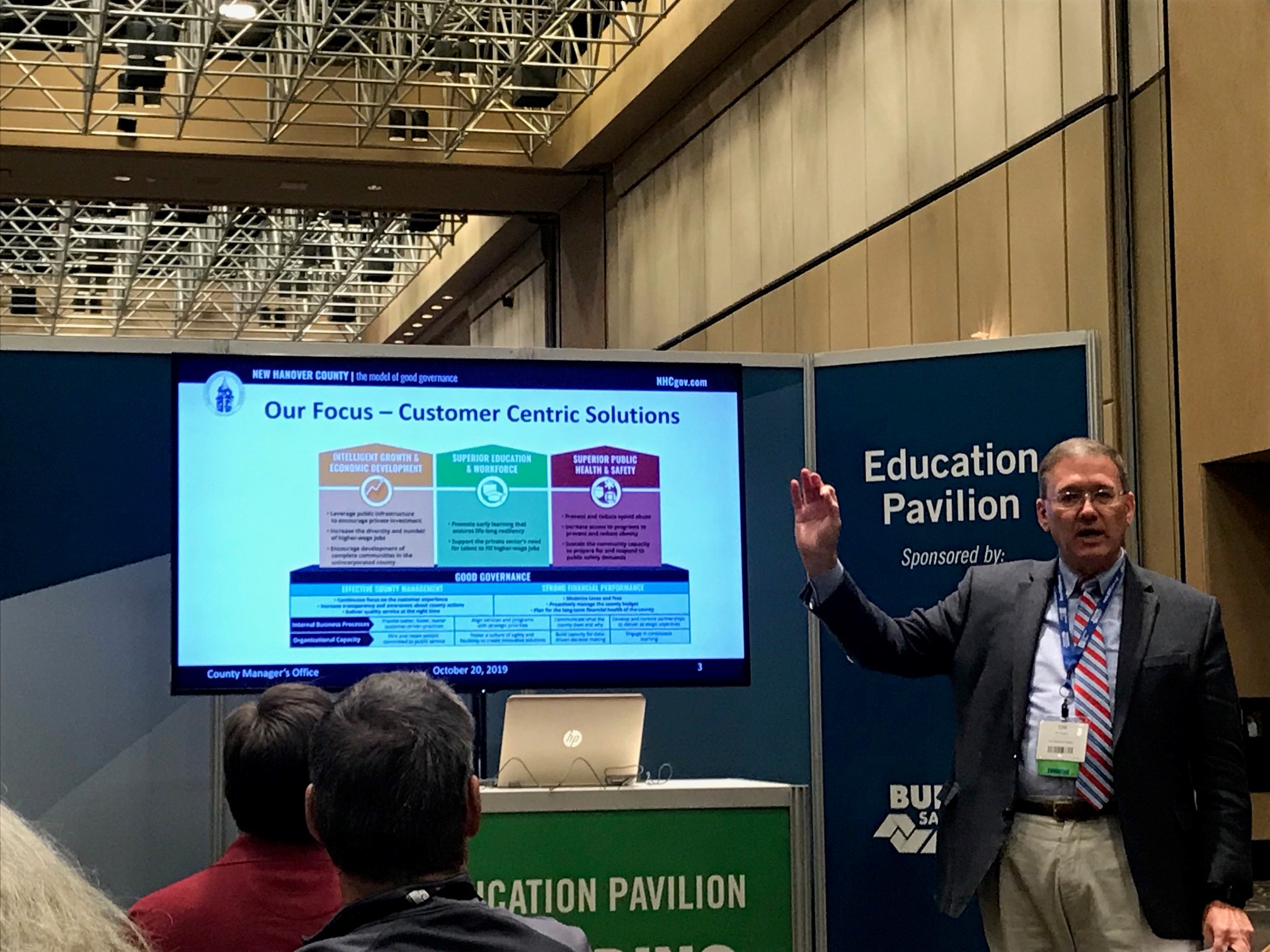3 Strategies for Top-Notch Implementation
November 25, 2019 by Marissa Hepner

Change can seem intimidating, especially when it comes to new technology. As leaders in New Hanover County, North Carolina, learned, however, the right approach to implementation can make all the difference.
When New Hanover staff selected a new community development software, they did more than implement a new technology. They used it as an opportunity to align their processes and position the customer at the center of all their efforts. This strategy was so successful, New Hanover received the 2019 Achievement Award in Community and Economic Development from the National Association of Counties (NACo). The county saved valuable time and money, too.
Leslie Chaney, Chief Information Officer, and Tim Burgess, Deputy County Manager, shared the county’s top tips on their team’s successful implementation process at the 2019 International Code Council’s (ICC) Annual Conference. Here are their three key strategies:
1. Design a product around the customers’ needs.
What does it really mean to “put the customer first”? To Burgess, it means that “everything we do begins and ends with the customer.” Before even considering a new community development software product, Burgess said, “we asked our customers what they needed to perform their jobs more easily and be more productive.” New Hanover took this customer feedback so seriously, that it was incorporated into the RFP. Chaney and Burgess extended customer feedback to the evaluation process for the top vendors from the RFP responses, and again included stakeholder feedback in the final choice.
But the customer involvement didn’t stop there. Burgess continued, “Once we selected the new software, we brought them back in to help us design the product so it would meet their expectations. Then, we brought them back again to test the software, to make sure it delivered on their expectations. And we had them come in for training, too!”
“We continued to ask for customer feedback throughout the implementation process, and adapted to their needs, even if it meant spending a little extra time in the back office to get it right,” Chaney added.

Tim Burgess, Deputy County Manager, New Hanover County, NC
2. Build strong teams with a clear purpose.
“People are not an infinite resource,” Chaney explained. For that reason, the county prioritized efficiency, creating separate teams to tackle specific aspects of implementation:
- The steering committee was made up of department heads from across the county — from county planning and environmental health to fire services and finance. They sat down together weekly to answer questions and make key decisions to keep the project moving.
- The team of subject matter experts (SMEs) included operational leaders from all departments. With valuable boots-on-the-ground insight, the SMEs helped guide New Hanover staff on how to best configure the new software to meet the operational needs of the customers.
- Super users were also crucial to the successful implementation. This group learned how to use the system from start to finish, becoming reliable experts that others could come to with questions.
By putting the right people in the right roles, New Hanover was not only able to keep the project moving, but was also able to preserve staff’s most valuable resource — time.
3. Be agile. Expect change.
Rather than approach implementation as one long process, New Hanover used an agile model. Staff divided the process into smaller pieces — sprints — which gave them the flexibility to make corrections early on. Over time, this iterative strategy allowed them to steer the software exactly where they wanted it to go.
“For an agile approach to work,” Chaney explained, “a good working relationship with your vendor is a must.” A winning partnership was crucial during each sprint, to be able to make improvements, work through issues, and brainstorm solutions together.
The sprints didn’t end with implementation, either. New Hanover continues their sprints post go-live, making small adjustments and at least one large upgrade a year. “We’ve learned that when change is expected, it’s not such a scary thing,” noted Chaney.
New Hanover will continue to follow this successful implementation model for new systems going forward. Thanks to these innovative leaders for sharing strategies that helped ICC attendees replace their implementation anxieties with excitement for a customer-centered future.